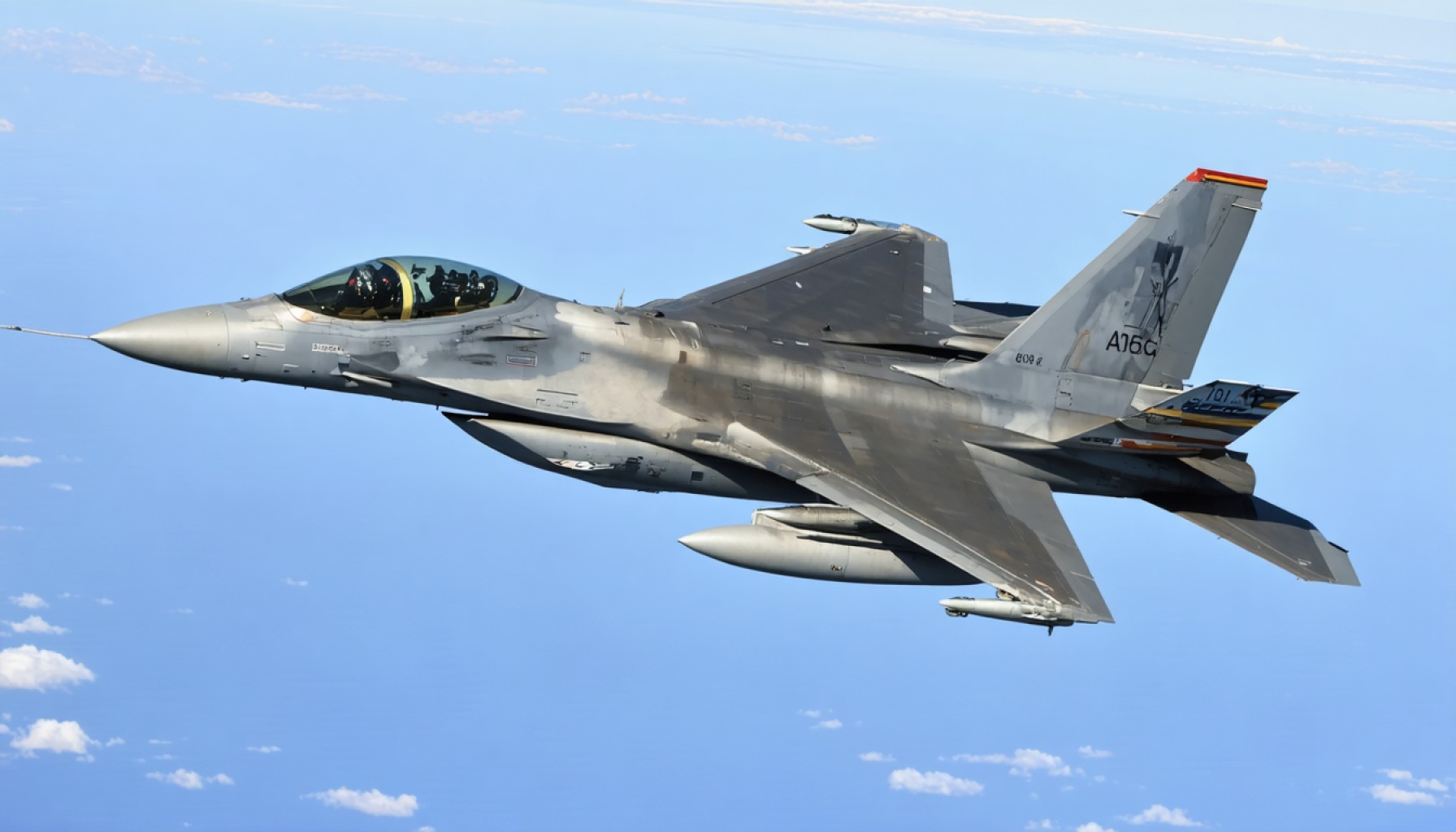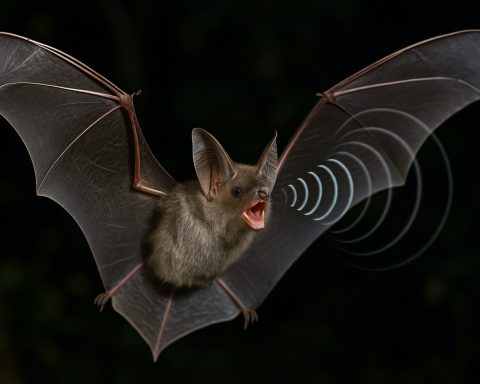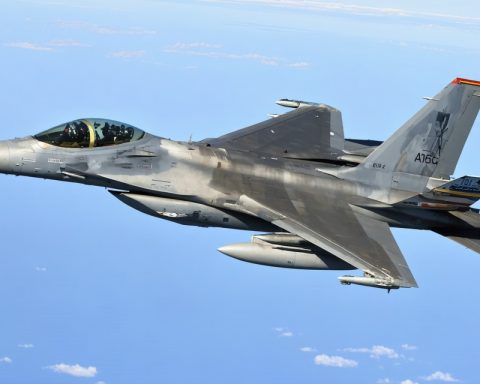- The F-16V, produced in Greenville, South Carolina, represents a blend of aviation legacy and modern innovation, making it an attractive option for nations seeking advanced capabilities.
- Equipped with the AN/APG-83 AESA radar, the F-16V integrates seamlessly into modern combat, akin to fifth-generation fighters.
- The F-16V is economically viable, providing robust military capability at a lower cost compared to more expensive stealth options like the F-35.
- The jet’s production fuels local economies, creating jobs and boosting industry in Greenville.
- Beyond economics, the F-16V fosters international alliances, serving as a diplomatic bridge alongside providing defense capabilities.
- Countries like Slovakia, Bulgaria, and Morocco view the F-16V as both a defense asset and a symbol of deeper ties with the United States.
- The F-16V emerges as a strategic tool amidst global geopolitical fluctuations, embodying power and assurance in defense and diplomacy.
Rolling off the production line in Greenville, South Carolina, the F-16V stands as a modern marvel of aviation engineering—a sleek silhouette embodying the blend of enduring legacy and cutting-edge innovation. Dubbed the “Global Home of the F-16,” this facility supports a dance of industry that churns out upgraded fighter jets destined for international skies. Amid the noise of industrial machinery, there lies a relentless pursuit of air supremacy, a pursuit which captivates nations like Slovakia, Bulgaria, and Morocco.
The F-16V isn’t just a product of advanced aerospace technology; it’s a statement—a bridge between the past and the future of aerial warfare. As the cost-prohibitive F-35 stealth fighter takes the stage for the wealthiest defense budgets, its older cousin, the F-16V, becomes the star attraction for those seeking robust capability without breaking the bank. The sophisticated AN/APG-83 Active Electronically-Scanned Array (AESA) radar allows this nimble jet to speak the same language as fifth-generation fighters, ensuring it slots harmoniously into modern combat scenarios.
Greenville doesn’t just manufacture an aircraft; it manufactures alliances. The economic heartbeat it generates pumps lifeblood into the local economy, creating thousands of jobs and fostering an ecosystem where workers, suppliers, and policymakers thrive. The F-16V’s role on the global stage extends beyond economics, nurturing partnerships that stretch from Washington to the far flung regions of its partner nations, which see these jets as both a defense asset and a diplomatic handshake.
Despite geopolitical gusts stirring anxiety around U.S. commitments, the lure of the F-16V remains potent. It’s a machine of metals and wires, yet it’s also woven with threads of geopolitical strategy, emerging as a favorite for countries looking to cement their military and political ties with the United States. In Slovakia, the purchase was not merely an exchange of money for metal; it was a proclamation of a long-term alliance with Washington. This partnership story is echoed across the globe, with countries lining up to ink deals, betting on the steadfastness of American support.
The F-16V proves that legacy and innovation can coexist, rendering this iconic fighter jet indispensable to a world where security challenges are as volatile as ever. While geopolitical concerns loom, for many nations, the F-16V offers a crucial assurance of power in the skies—and perhaps more meaningfully—power in global diplomacy.
The F-16V: A Perfect Balance Between Innovation and Affordability
Introduction
The F-16V, emerging from Greenville, South Carolina, stands as an evolutionary leap in aviation technology while continuing to forge strong international alliances. Known as the “Global Home of the F-16,” this facility embodies both economic vibrancy and cutting-edge advancements, producing fighter jets that capture the interest of a global audience.
Features and Specifications
The F-16V is equipped with standout features such as the AN/APG-83 Active Electronically-Scanned Array (AESA) radar, which offers superior target detection, tracking, and engagement capabilities. This system empowers the F-16V to operate seamlessly alongside fifth-generation stealth fighters, expanding its operational relevance and ensuring compatibility with modern air combat requirements.
1. Engine and Performance: The F-16V is powered by a single Pratt & Whitney F100 or General Electric F110 engine, providing exceptional maneuverability and speed, essential for gaining air superiority.
2. Avionics and Systems: Besides the AESA radar, the F-16V features state-of-the-art avionics, a new mission computer, high-resolution displays, and advanced electronic warfare systems, ensuring adaptability in dynamic combat environments.
3. Weaponry: The aircraft supports a diverse array of weaponry, including air-to-air missiles, precision-guided bombs, and internal cannon—providing versatile combat capabilities.
Market Forecasts and Industry Trends
As defense budgets tighten globally, many nations turn to the cost-effective F-16V as an attractive alternative to the pricier F-35. Lockheed Martin’s streamlined production processes and proven performance records make this fighter jet an ideal choice for countries such as Slovakia, Bulgaria, and Morocco, each seeking to bolster their air defenses without incurring the expense of fifth-generation aircraft.
Real-World Use Cases
The F-16V’s deployment illustrates strategic partnerships and national defense enhancements across several countries:
– Slovakia: Marks commitment to western defense standards and strengthens ties with NATO.
– Bulgaria: Modernizes its fleet, ensuring interoperability with other NATO forces.
– Morocco: Enhances regional stability and combats emerging security threats in North Africa.
Pros and Cons Overview
– Pros:
– Cost-Effective: Offers an affordable solution for modern air force needs.
– Up-to-Date Systems: Features advanced avionics and radar systems.
– Global Compatibility: Integrates smoothly with NATO and allied operations.
– Cons:
– Older Design: Despite upgrades, its base design is rooted in Cold War-era technology.
– Less Stealthy: Doesn’t match the stealth capabilities of fifth-generation fighters like the F-35.
Security and Sustainability
Incorporating sustainable practices, Lockheed Martin’s production of the F-16V emphasizes reducing environmental impact and promoting resource efficiency. Continuous technological upgrades ensure the aircraft’s long-term viability, as evidenced by its sustained demand.
Actionable Recommendations
– For Nations: Embracing the F-16V can secure airspace dominance affordably while enhancing diplomatic ties with the U.S.
– For Defense Analysts: Advocating for its interoperability with modern systems makes the F-16V a suitable option for countries upgrading from older fleets.
Conclusion
The F-16V emerges as a pivotal asset that blends legacy with innovation, meeting the modern defense demands of nations worldwide. Its role in fostering international cooperation and regional security remains unparalleled, proving indispensable in a volatile geopolitical landscape.
For more information about Lockheed Martin’s innovations, visit the Lockheed Martin website.










